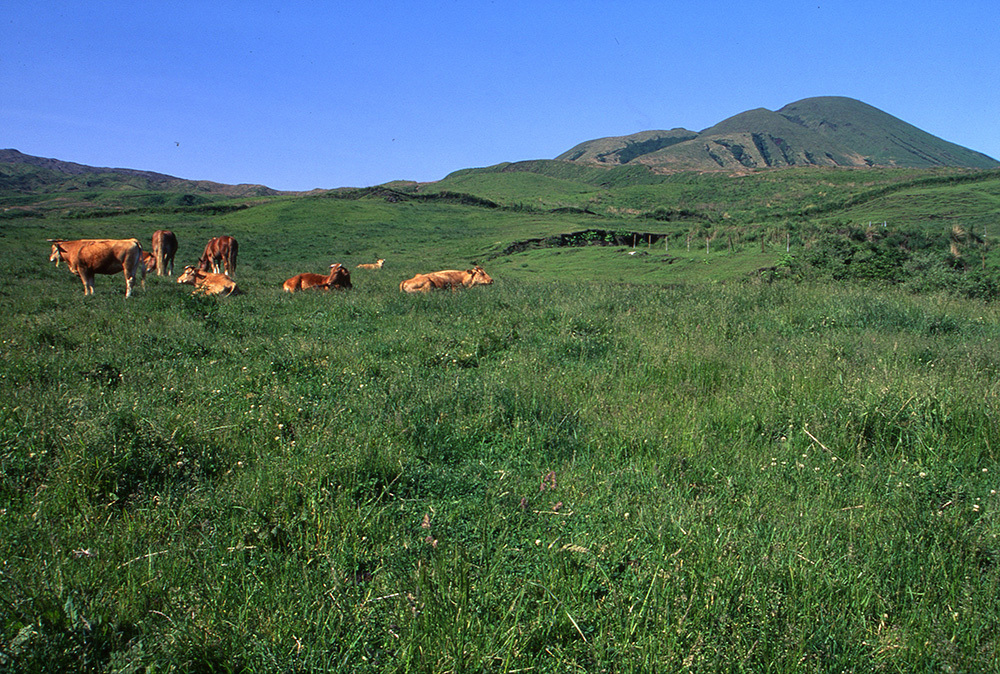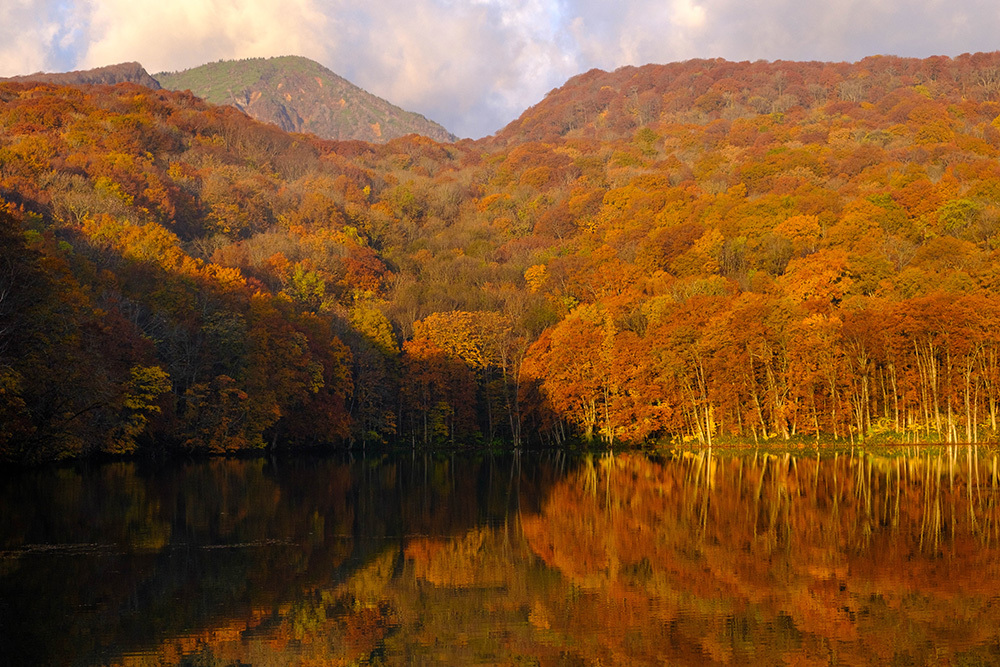SDGs達成のためのヒントをさまざまな識者に伺う、本連載。今回のゲストは、環境省・国立公園利用推進室 室長の岡野隆宏氏です。
現在、日本には34の国立公園があります。
みなさんは、国立公園は何のためにあるか、ご存じですか?
「国立公園は、自然をベースに社会や経済が成り立っていることを実感できる場所」という岡野氏。インタビューでは、生物多様性や地域社会・経済と国立公園の関わりについてお話を伺いました。

国立公園には、原生的な自然と人々の営みが息づいている
──「国立公園」という言葉は聞いたことがあっても、どのような場所なのか知らない方は多いと思います。まず、「国立公園」の選定の基準や目的を教えてください。
岡野:日本の中でもとりわけ自然が豊かで美しい景観であることが選定基準です。といっても、原生的な自然が残る森や川、海だけではなく、集落や農耕地といった人の営みによってつくられた場所も含まれています。国立公園の目的は、このような自然と風景を未来に残していくことです。
国立公園は自然公園法に基づいて環境大臣が指定し、国(環境省)が管理しています。しかし、国が全てを行っているのではなく、国立公園に指定された地域の暮らしに携わっている都道府県や市町村などの自治体、民間の事業者、さらには住んでいる方々と協力して管理運営しています。
──原生的な自然を残していくことを国立公園の目的に挙げられていますが、それは生物多様性を守るということでしょうか?
岡野:生物多様性というと絶滅危惧種を守ることのように捉えられがちですが、それだけではありません。国立公園は、区域を指定して保護し、多様な生物が生きていくために必要な生態系を守るというとても重要な役割を果たしています。保護というのは、端的にいえば、開発など自然の改変を国の法律で規制するということです。
例えば、西表島のイリオモテヤマネコが生息するためには、森や川、さらに海辺のマングローブといった生態系が必要です。現在、西表島のほぼ全域が石垣西表国立公園の指定区域になっていて、森や水辺など生態系を保護し餌となる生き物やすみかを維持することでイリオモテヤマネコを守っています。
──生物の保護以外に国立公園が果たす役割はありますか?
岡野:国立公園の中には、人の営みによる風景が、引き継ぐべき風景なっているところもあります。例えば、九州の阿蘇くじゅう国立公園は、大カルデラにそびえる阿蘇山やくじゅう連山があり、雄大な草原が広がっています。じつは、この草原は自然のままの風景ではありません。
この地域では昔から人々が牛や馬を飼って暮らしてきました。牛や馬は草を食べて育つので、草をちゃんと生やすために春に野焼きを行って草原が維持されてきました。もしも何もせずに放っておくと木が生えてやぶになり、雄大な景観が失われ、草原に生きてきた生物も減少してしまいます。ですから、阿蘇くじゅう国立公園では草原を積極的に守る取り組みをしています。例えば、人々の営みを応援するために、放牧して育った牛の販売をサポートしたり、草原の保全に関わるボランティアを養成したりしています。

岡野:他にも、人々の営みが変わったことで急激に増えてしまったシカやイノシシなどの生物が自然に与える影響を考えて、数を抑制するという形で介入を行うこともあります。基本的には自然を改変しないことを軸としつつも、何もしなければ失われてしまうものに対しては積極的に介入して保っていく姿勢を取っています。
──そのあたりのバランスはすごく難しそうですね。
岡野:そうですね。地域社会や将来世代に対して何を引き継いでいくのか、その目標によって国立公園の取り組みは変わってきます。特に人為的な介入を行う場合は、地域や研究者の方々の意見を聞いて議論してみんなで方向性を決めてやっていくという形でこれまでも取り組んできました。
──地域の方々の理解というのはきちんと得られているものでしょうか?
岡野:地域の方々との協力体制がしっかりできている場所もあれば、十分でない場所もあります。協力体制が整わない原因のひとつとして、例えば、風景や絶滅危惧種を守ることが地域にとってどんなメリットがあるのか、なぜ私たちがやらなければならないのかと、地域の方々が疑問を抱くことがあります。ですから、自然を守っていく価値をきちんと説明していくことが重要です。
実は、地域の暮らしや産業は地域の自然や生物多様性に支えられてきました。その価値を見直すことは地域の持つ資源や新たな地域づくりを考えることにつながるのです。自然や生物多様性の保全は今後ますます重視されていくと思いますが、地域の社会や経済の目指す姿と重ねながら、地域の方々と一緒に取り組んでいくことが大事です。
国立公園を起点に、サステナブルに経済を循環させていく
──国立公園と、地域の社会・経済との関わりについて教えていただけますか?
岡野:国立公園は、美しい風景や生物多様性を守っていますが、それを多くの方が見て、その素晴らしさに感動し、それを引き継いで守っていくことの意義を感じてもらうことを目的としています。ですから観光は大事なのですが、パーッと見て泊まって帰るような、物見遊山のようなものでは国立公園の魅力を十分には体感できません。
このような観光は滞在時間が短く、地域経済への貢献も限定的ですし、時代のニーズにも合わなくなっており、廃屋になっている大規模な宿泊施設が各地で見られます。観光がうまく回らなくなっていく中で、地域社会や国立公園にとって、良い観光の形を一緒につくっていかなければなりません。
そこで、風景を見るだけの観光から、自然を体験し、歴史や文化に触れて感動が得られる観光へアップデートしようと、「国立公園満喫プロジェクト」を進めています。国立公園の多様な魅力を感じてもらうことで、その地域に滞在する時間が伸びたり、訪れる場所が増えて、地域経済が潤うことを目指しています。
国立公園が地域に果たす役割がないと、ただ自然を守っていても仕方ないという考えになってしまいます。ですから、観光を一つの切り口に、どのように地域の経済を持続可能なものにしていくかが大きな課題です。
また、サステナブルやカーボンニュートラルという点では、旅館の電気を再生可能エネルギーで賄ったり、温泉熱を暖房に活用したり、プラスチックやペットボトルを極力減らしたり、飲食店や宿泊施設などで使う食材を地元でとれたものにして、地産地消を進めることも大事だと考えています。そうすることでお金が地域に循環して、地域にとって効果の高い経済活動になっていきます。
これまで環境は経済と対立的に捉えられてきました。しかし、いまは環境を契機に経済社会を変えていく時代で、それがSDGsが目指しているところだと考えています。ですから、地域経済と国立公園、そして生物多様性の保全をセットで取り組んでいくことが重要です。
国立公園も、かつて大規模なリゾート開発の圧力にさらされていた時代がありました。そのときは自然を守ることに注力しなければならず、保護に軸足が置かれていました。しかし、SDGsという考え方も広がり、環境・自然が大事だという理解が深まってくると、昔のようなむちゃくちゃな開発は起こらなくなってきています。ですから国立公園もただ自然の保護だけではなく、うまく活用するというスタンスで取り組んでいます。国立公園を訪れる方々も、旅の中でサステナブルな取り組みを学ぶことで自分の日常の暮らしの見直しにつながるのではないかと思います。
自然をベースにして、社会活動や経済活動は成り立っている
──今後の国立公園についての展望を教えてください。
岡野:観光のあり方として、いま海外で注目されているのがアドベンチャーツーリズムです。これは基本的にはガイドが同伴して、少人数で自然や文化について体験を通して学ぶ旅行形態です。日本の国立公園でも展開していきたいですね。自然の風景をただ見るだけではなく、その風景が長い歴史の中でどのように変容して現在の姿になったのか、生息する動植物がどのように変化してきたのか、さらに人間がどう関わってきたのかというストーリーを知ることで得られる感動があるはずです。そして、ストーリーを知ることで、人間の暮らしは自然がベースになっていることに気づいていただけるのではないかと思います。
観光については、オーバーツーリズムの問題も解決する必要があります。例えば、十和田八幡平国立公園に、蔦沼(つたぬま)という非常に紅葉の美しい場所があります。秋の早朝に蔦沼の展望デッキから見る風景はとても幻想的で、多くの人が展望デッキに押し寄せて混雑します。展望台からはみ出て三脚を立てて写真を撮ったり、路上駐車が増えたり、交通渋滞が深刻化したり、周辺環境への影響が危惧されています。訪れた方も、混雑の中で風景を見るわけですから、良い体験とはいえません。
そこで2020年から、紅葉シーズンの早朝の展望台への入場を予約制にして、入るときに協力金をいただく取り組みを地域と始めました。そうすることで落ち着いた状態で、日の出とともに刻々と移り変わる風景を満喫できるようになりました。

岡野:このような上質な利用には、ストーリーとガイダンス、ルールが大事です。これらを踏まえることで、より付加価値の高い体験を旅行者に提供して満足度を上げ、きちんと対価もいただいて自然環境の保全に金銭的なサポートをしていただけるような仕組みをつくっていきたいです。
──最後に、国立公園の魅力を知るために必要なことをお聞かせください。
岡野:僕はSDGsの考え方で一番しっくりくるのが、「SDGsウエディングケーキモデル」だと思っています。これはSDGsの概念を表す構造モデルですが、ベースに環境(自然資本)があり、その上に社会、さらに経済が乗っているという考え方です。

岡野:あくまでもベースは環境であり、私たちは環境に支えられて社会活動や経済活動を行っている。その順番を間違えないことが一番重要だと感じています。そして、環境、社会、経済について一緒に取り組んでいくために、SDGsの目標17「パートナーシップで目標を達成しよう」があると考えていて、それは国立公園も同じだと考えています。
国立公園は、レンジャーやアクティブレンジャーが、地域の方々と協力し合いながら自然を将来に引く継ぐために取り組んでいます。それに支えられて地域の社会、文化が成り立っている。そのベースの上に魅力的な観光があると考えていくのが国立公園のあり方だと思います。観光価値をより高めていくには、自然環境と地域社会を良くしていくことが不可欠です。これをわれわれは保護と利用の好循環といっていますが、国立公園を訪れていただくことによって地域が良くなり、環境が良くなる。それによってまた感動が大きくなる。そのような好循環をつくっていきたいです。

TeamSDGsは、SDGsに関わるさまざまなステークホルダーと連携し、SDGsに対する情報発信、ソリューションの企画・開発などを行っています。
※岡野隆宏さんの記事はこちらもご覧ください
自然を体験して理解することが、自然環境や生物多様性を守る第一歩になる
~環境省・岡野隆宏さん 日光国立公園アクティブレンジャー・善養寺聡彦さん
この記事は参考になりましたか?
バックナンバー
著者

岡野 隆宏
環境省
自然環境局 国立公園課
国立公園利用推進室 室長
1997年に環境庁(現・環境省)に入庁。国立公園のレンジャーとして阿蘇くじゅう国立公園、西表(いりおもて)国立公園(現・西表石垣国立公園)で現地勤務を経験。2010年から2014年まで鹿児島大学特任准教授として、「自然環境の保全と活用による地域づくり」をテーマに調査・研究。2014年12月より「つなげよう、支えよう森里川海」プロジェクト、2018年8月から2020年6月まで「地域循環共生圏」づくりを担当。温泉地保護利用推進室長を経て、2021年7月より現職。


